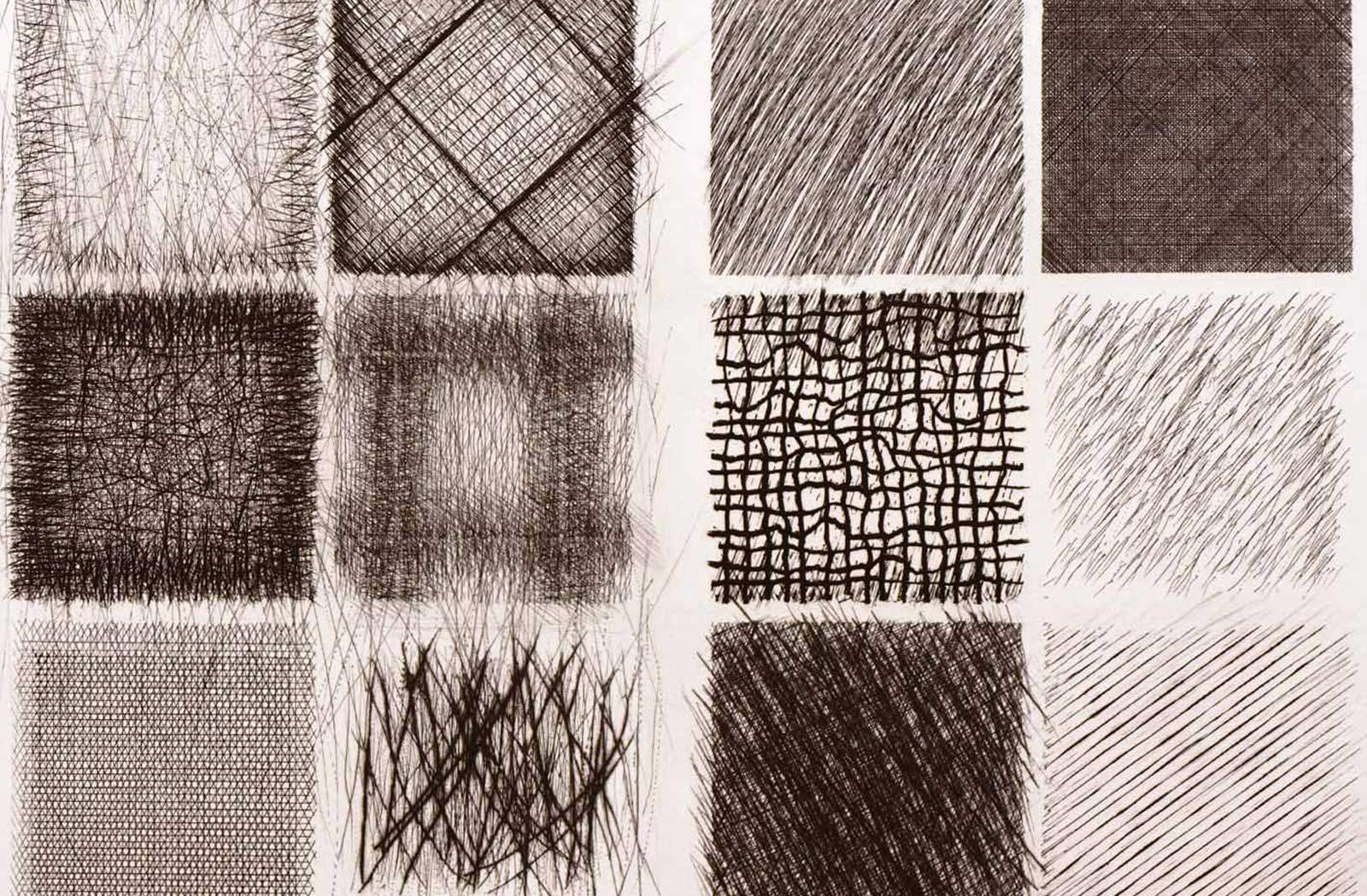An exhibition in Rome to celebrate Guido Strazza's 100th birthday
From Nov. 28, 2022 to Jan. 16, 2023, theAcademy of Fine Arts in Rome, at its headquarters on Via Ripetta 222, hosts the exhibition Guido Stazza. The Gesture and the Sign. An exhibition for a hundred years, set up to celebrate the 100th birthday of Guido Strazza ( Santa Fiora, 1922). The anthological exhibition, staged in Sala Colleoni, displays paintings, etchings and drawings from throughout the career of the great artist who began his career as a Futurist artist. The exhibition aims to celebrate one of the greatest artists of the Italian 20th century, on the occasion of his 100th birthday, December 21, 2022. The graphic and pictorial aspects of his “marking” are investigated and deepened in the catalog by essays and testimonies by Franco Fanelli, LuciaTongiorgi Tomasi, Alessandro Tosi, Giulia Napoleone, Roberto Piloni, Marina Bindella, Gianluca Murasecchi and an interview with the artist by Flavia Matitti.
“In this exhibition,” says Gianluca Murasecchi, curator of the exhibition, “it was a question of choosing parts of a whole or the whole in part, the second hypothesis prevailed, albeit more difficult to follow, it, finally, necessarily developed in giving visibility to the datum of variations on the theme, in offering an overview of the possibilities of cultural connection, in analyzing the multiformity of languages ignited by a single fulcrum of conception, the sign, placing a possible glance also on the design and generative factor of Strazza’s work, that is, on unpublished drawings, never published and exhibited, which place us before a lightning-fast, all-round search, sometimes insisted on until the solution stubbornly found at a distance of years. What emerges is the figure of an artist who has chosen the graphic datum as the privileged datum but not postponed to a painting of glazes and tempera chromes. Tempera painting reminiscent of what might be called a ’Contemporary Fourteenth Century,’ composed of glazes as fine as onion shells or magmatic materials that capture in depth subterranean ignitions, of sanguine saber-rattling, that make us feel every underlying matter at our skin. Opaque vividness of color that only tempera can convey.”
Born Dec. 21, 1922, in Santa Fiora (GR), he began his artistic activity at a very young age under the guidance of Marinetti, who in 1942 invited him to aeropittura exhibitions, at Palazzo Braschi in Rome and at the Venice Biennale. He graduated in engineering in Rome in1946 but after two years abandoned the profession perdedicating himself to painting. He left for South America, visiting Chile, Brazil and Peru where he developed a broad interest in preInca art. In Rio de Janeiro Fayga Ostrowerlo begins etching techniques; in São Paulo he exhibits at the Art Biennale in 1951 and 1953. He returned to Italy in 1954 and opened a studio in Venice. From 1957 to 1963 he lived in Milan and made Sign Tales and long paintings on scroll and studies on Metamorphoses of Forms, collected in a series of themed painting cycles dedicated to Landscape in 1956, Balzi Rossi in 1958 and Dutch Landscape in 1961. He then returned to Rome and, between 1964and 1967, attended the workshop of the Calcografia Nazionale where he deepened the language of engraving. The result of this exploration was presented in 1968 at the Venice Biennale where he exhibited in a solo room. In 1979 Scheiwiller published his book Il gesto e il segno and exhibited the series Trama quadrangolare at Palazzo Reale in Milan. Other cycles of painting and engraving followed: Signs of Rome, Cosmati, Garden of Euclid, Auras and Arches. In 1984 he again had a solo room at the Venice Biennale. Among the many exhibitions in the years to follow are the anthological exhibition at the Calcografia Nazionale in 1990, the one at the Basilica Palladiana in Vicenza in 2005, and the major anthological exhibition at the National Gallery of Modern Art in 2017. He is passionately dedicated to teaching and also teaches at the National Chalcography, Wesleyan University, the University of Siena, the Academy of Fine Arts in Rome, of which he is then director in 1985- 88, and the Scuola Libera di Graficadi Matera. His works are also held at the British Museum in London, the Ludwig in Cologne, theStedelijkdiAmsterdam, the Vatican Museums, the Uffizi, the Mart in Rovereto, the Ca d’Oro in Venice and Gnam in Rome, which acquired his archive. He receives various awards, including: the Feltrinelli Prize of the Accademia dei Lincei in 1988 for graphic art and in 2003 for engraving, the “Cultori di Roma” Prize in 2002, the Vittorio De Sica Prize for visual arts in 2014, and others. He is a member of the Koninklijke Vlaamse Academie van België, the National Institute of Roman Studies, and the National Academy of St. Luke, which he chairs in 2011-12. From Nov. 28, 2022 to Jan. 16, 2023, the Academy of Fine Arts in Rome will celebrate its 100th anniversary withan exhibition at the Sala Colleoni curated by Gianluca Murasecchi. For the occasion, the artist has donated a series of etchings to the Academy.
Days and hours of the exhibition: Monday through Saturday, 8 a.m. to 7:15 p.m. The exhibition will be closed on holidays and during the Christmas season from December 24, 2022 to January 8, 2023; it will reopen to the public on Monday, January 9 with the same hours.
 |
| An exhibition in Rome to celebrate Guido Strazza's 100th birthday |
Warning: the translation into English of the original Italian article was created using automatic tools. We undertake to review all articles, but we do not guarantee the total absence of inaccuracies in the translation due to the program. You can find the original by clicking on the ITA button. If you find any mistake,please contact us.



























